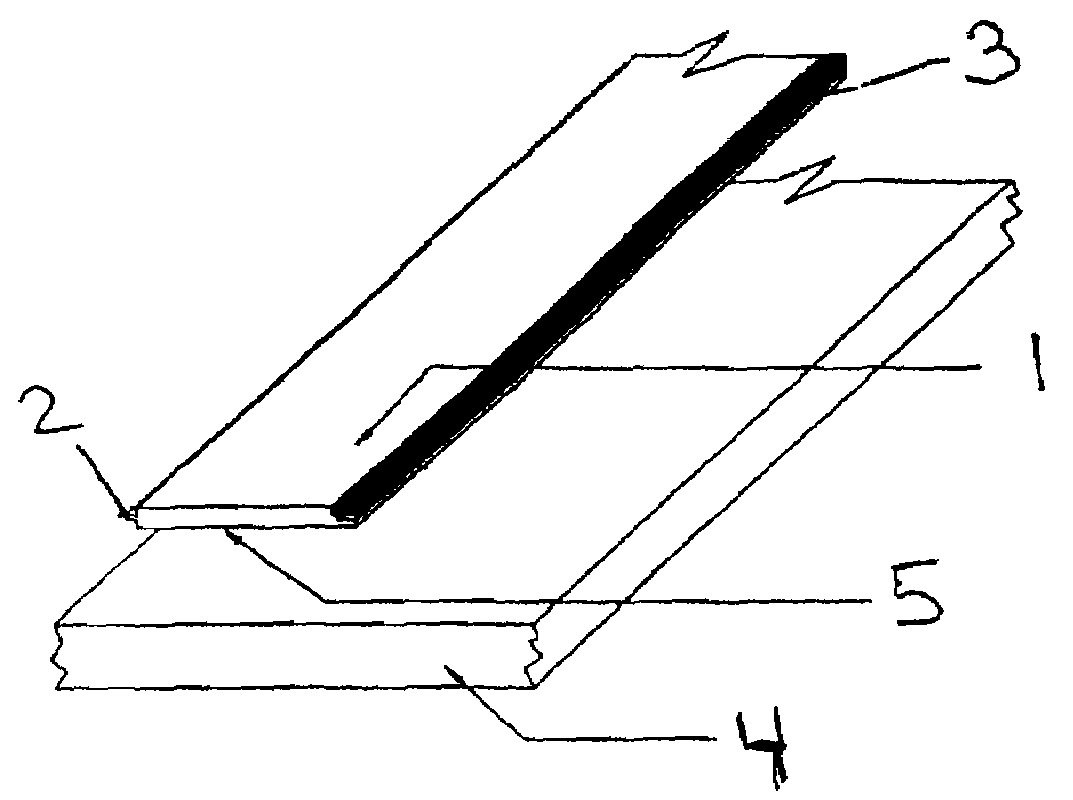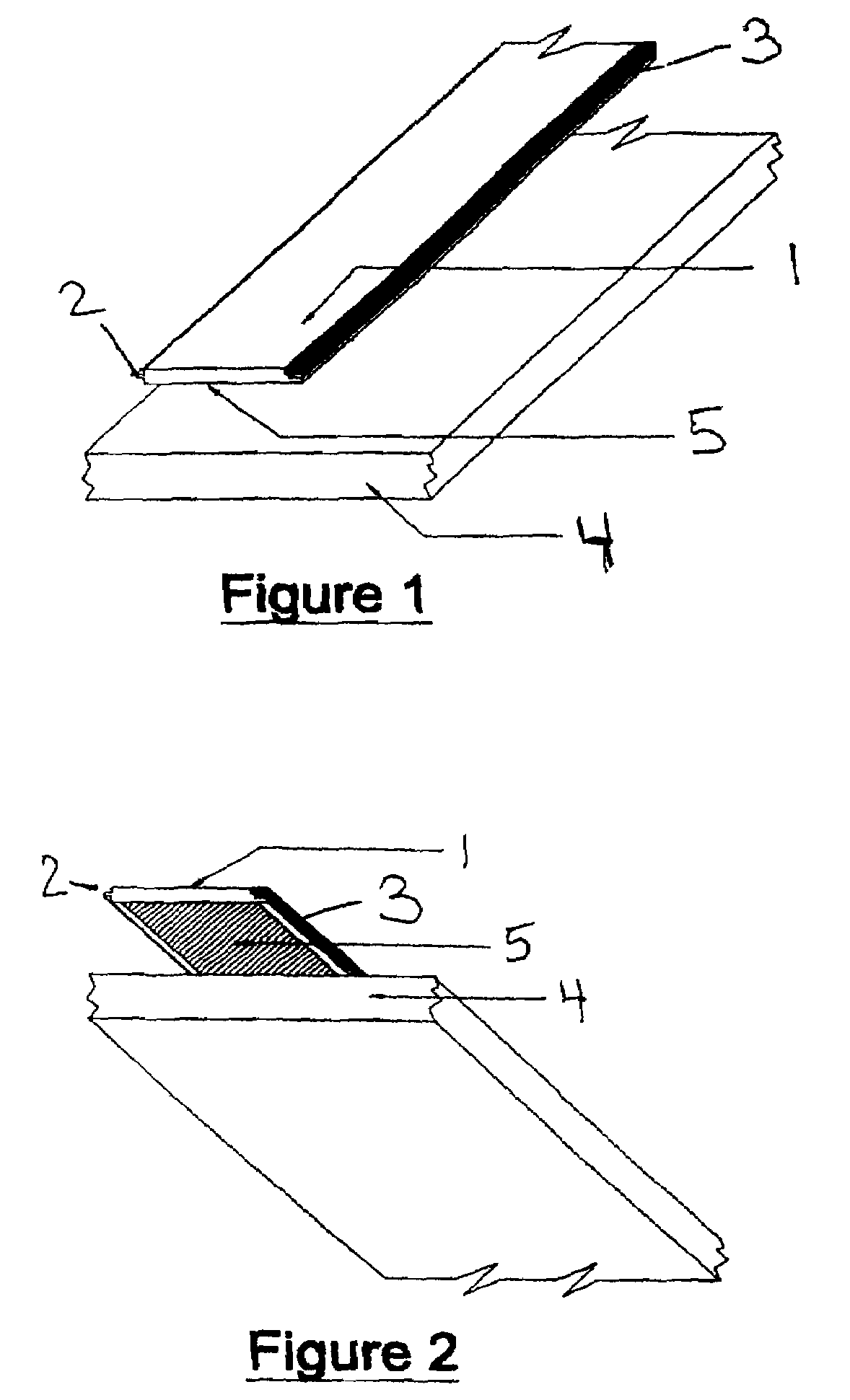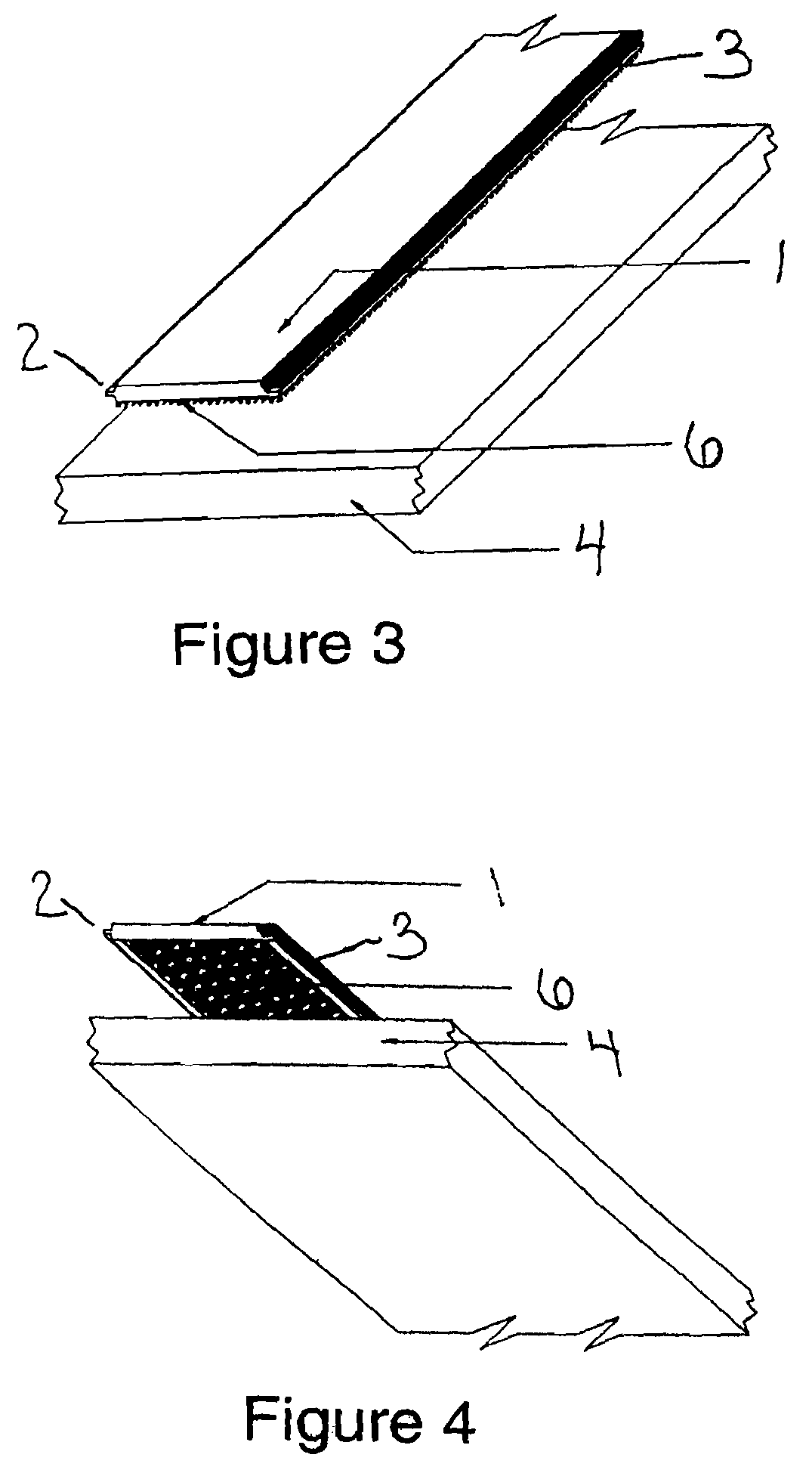Simulated wood surface covering for decks and floors
a simulated wood and deck technology, applied in the direction of special-purpose vessels, vessel parts, vessel construction, etc., can solve the problems of reducing the service life of teak decks, and requiring a tremendous amount of physical labor in two-step processes, and achieves easy assembly, high water resistance, and easy washability.
- Summary
- Abstract
- Description
- Claims
- Application Information
AI Technical Summary
Benefits of technology
Problems solved by technology
Method used
Image
Examples
example 1
[0042]A plastic composition that contains 200 parts by weight of polyvinyl chloride resin, about 20 parts by weight of powdered nitrite rubber (as a non-migrating plasticizer), about 2 parts by weight of a brown colorant, about 0.2 parts by weight of a streaking agent, about 1 part by weight of Irgaguard® F 3000 organic fungicide, and about 1 part by weight of benzotriazole ultraviolet light stabilizer can be extruded into plastic strips that are adapted to be interconnected from side to side. As the strips are being extruded, a pressure sensitive adhesive and backing are applied to the underside of the strips to produce a peel and stick type of structure. This allows for the simulated wood surface covering having the pre-applied pressure sensitive adhesive to be stored and shipped without sticking to any other object or surface before being applied to the boat deck.
[0043]These plastic strips can then be sanded with 36 grit sandpaper in the longitudinal direction to attain a surface...
example 2
[0046]A plastic composition that contains 100 parts by weight of polyvinyl chloride resin, about 30 parts by weight of powdered nitrile rubber (as a non-migrating plasticizer), about 3 parts by weight of a brown colorant, about 0.4 parts by weight of a streaking agent, about 1 part by weight of Irgaguard® F 3000 organic fungicide, and about 1 part by weight of a benzophenone ultraviolet light stabilizer can be extruded into plastic strips that are adapted to be interconnected from side to side by a mortise and tenon means. After being extruded while the plastic composition is still hot and soft a polyester fabric can be pushed into the underside of the strips. After the plastic composition is allowed to cool the polyester fabric is well bonded into the underside of the plastic strips.
[0047]The top side of these plastic strips can then be sanded with 36 grit sandpaper in the longitudinal direction to attain a surface having the texture of wood. The strips can then be glued side by si...
examples 3-6
[0049]In this series of experiments simulated wood surface coverings having different types of surface textures on the bottom surface thereof were tested to determine the relationship between surface texture and adhesion to a substrate. The type surface texture on the bottom surface of the simulated wood surface coverings evaluated in this series of experiments is depicted in Table I. In the procedure used the bottom surface of the simulated wood surfaces was totally covered with an acrylic adhesive and the then applied to a plywood substrate. In all cases the adhesive was allowed to fully cure to the plywood substrate. Then the strength of the adhesion of the simulated wood surface covering to the plywood substrate was tested. This was done by measuring the force that needed to be applied to pull the simulated wood surface covering from the plywood substrate. The results of this experiment are reported in Table I.
[0050]
TABLE IExampleSurface TextureStrength of Adhesion3Dovetail40-45...
PUM
| Property | Measurement | Unit |
|---|---|---|
| included angle | aaaaa | aaaaa |
| included angle | aaaaa | aaaaa |
| included angle | aaaaa | aaaaa |
Abstract
Description
Claims
Application Information
 Login to View More
Login to View More - R&D
- Intellectual Property
- Life Sciences
- Materials
- Tech Scout
- Unparalleled Data Quality
- Higher Quality Content
- 60% Fewer Hallucinations
Browse by: Latest US Patents, China's latest patents, Technical Efficacy Thesaurus, Application Domain, Technology Topic, Popular Technical Reports.
© 2025 PatSnap. All rights reserved.Legal|Privacy policy|Modern Slavery Act Transparency Statement|Sitemap|About US| Contact US: help@patsnap.com



